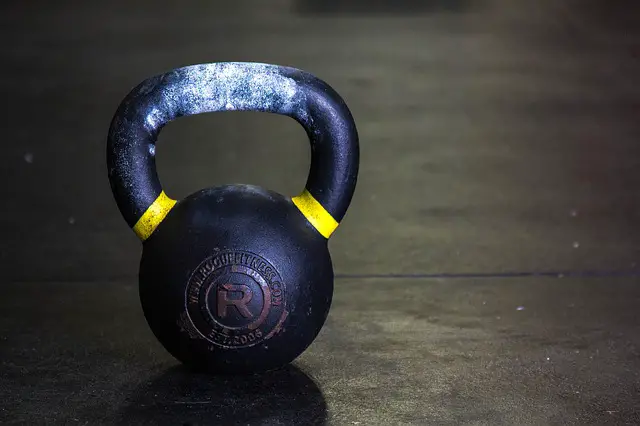Rucking Workout Plan: 6 Weeks to Basic Ruck Fitness
What is Rucking?
Rucking, tabbing, yomping, etc. Rucking goes by many names, but, it’s quite simply an amazing way to get fit with the aid of a weighted backpack. The history of rucking goes way back to the era of the Roman Empire, a time when troops were drilled with full-weight gear. The practise continued in to the modern era and is now a proven way to ensure troops are hardened to the rigours of moving over long distances whilst carrying large loads on their backs.
Although I’ve already documented some hillwalking fitness tips, this guide goes one step further. It’s aimed at anyone looking for that little extra in their training routine.
Before we delve deeper into this rucking workout plan, let’s take a whistle-stop tour of the terms you might see me use to describe the ‘art of ruck’:
- Yomping. This term is used by British Royal Marines to describe a 30-mile march over Dartmoor carrying 55lbs in their bergens.
- Tabbing. Likewise, tabbing is a British Army phrase used to describe marching whilst carrying heavy weights aka full battle order.
- Hanging out. An old military phrase the exact meaning of which is coarse. A polite translation of this term would be something along the lines of: ‘Good Lord, I seem to be somewhat worn out from that massive exertion.’
The practise of rucking has expanded into the civilian word where many companies have adopted the phrase and built training plans, even businesses, around the idea.
The Simplest Way to Get Ruck Fit
Quite simple: join the Armed Forces, preferably a teeth arm (these are the parts that engage the enemy) and you’ll be ruck fit in no time! Now that’s probably a bit extreme for most of you which is why I’ve written this article.
Rather than analyse your reasons for using rucking to get fit I’m going to assume you already have decided on why this type of exercise fits in with your needs. At the heart of this training is a very simple concept: pull on your rucksack and start marching for a set distance. Over a period, you will increase the speed, distance travelled and weight carried.
What are your plans? Are you taking part in an event like Gone Tabbing (a hardcore speed march that covers some of the routes the British SAS use on selection?) Or something else? You can also use our ruck exercise plan as a supplement to your usual training regime.

A few years ago, I was running a lot. On average I was coverage about 40 miles per week with a final run of between 13 to 18 miles on a Sunday. The problem was I peaked. This is where you reach a plateau from which you launch into the next phase of training. The biggesst issue for me was that my times weren’t improving.
So, I turned to rucking. By replacing two of my runs with two weekly sessions marching with a weighted rucksack I soon broke through the cardio ceiling.
If you’re planning to carry heavy loads, you’ll want to consider which backpack best suits your needs. I’m putting together a piece on the best lightweight hiking packs, which will ready ‘soon’ and will give you a good insight into the demands placed on a rucking backpack.
What distance do you plan to cover and over what terrain? If you train exclusively on flat ground and over short distances don’t expect to feel good at the end of a long march over steep hills. Your training will need to consider this. Here’s an example:
Many moons ago I joined an Army course with many other candidates. The training area was, and still is, the Brecon Beacons in Wales. Most of the entrants on that course had spent months building up their fitness by marching over similar landscapes. A few hadn’t. Within two weeks of the course starting we’d lost half of the number due to lack of preparation.
Whilst it’s unlikely many of you will be preparing for a military course, you will still need to assess your desired outcome and train accordingly.
2 Day Per Week Rucking Plan
Is it possible to get ruck fit working out only twice a week? Yes. To be honest, as long as you use other forms of cardio to build and maintain your base fitness levels, you won’t need more. The plan you’ll find at the end of this post aims to get you ruck fit in about 6 weeks.
Rather than write a full plan to supplement your rucksack training, here are some of the methods I use:
Running. Pretty much ‘the’ byword in cardiovascular training, running is one of the most effective ways to burn fat whilst improving the capacity of your heart and lungs. Regular sessions, three times a week, whilst following a plan will produce huge gains in your fitness.
Note: there are many different approaches to using running to build your fitness. Some people advocate HIIT (High Intensity Interval Training) as the most effective way to improve fitness. Others will tell that long, slow runs work for them (I use a mix of both). Rather than labour the point, I’ll let you choose the best fit for your desired fitness, and lifestyle demands.

Cycling. Another brilliant way to boost your fitness, cycling is a favourite of mine when preparing for major expeditions (more on that in a minute). The type of cycling is up to you. Some of my friends prefer long, high speed road races where they cover many miles and hours of travelling. Others prefer mountain biking.
My choice is in between the two. My method of choice involves deflating the cross-country tyres on my bike and then cycling for a couple hours on and off road. By reducing the pressure by about 50% the training sessions give my quads a real workout (those muscles are on fire by the time I’m finished). I’ve built my routes up to about 20 miles.
Walking. Well, if you gonna get ruck fit you might as start as you mean to go on. Ideal if you’re a beginner, recovering form injury or simply not interested in running or cycling. Lower impact than running, but not as easy going on the joints as cycling, speed walking is a great way to improve your fitness.
Note: I mean speed walking. Anything less than 80% of your Maximum Heart Rate isn’t going to produce the rapid gains you likely want.
Rucking Workout for Beginners: Other Thoughts for Your Rucking Plan
The first question that always springs to mind is diet. I’ve rucked for many years and have never felt the need to drastically modify my food intake. As you progress you will need to introduce more protein into your meals to provide the necessary fuel for building your growing legs muscles.
Should I hit the hills straight away? No. Seriously, this is a fast route to injury and a long layoff. When I started planning my solo ski to the South Pole, I hit the trails hard and early. Initial progress was good. But I moved too fast. On week three of my training plan the longest distance I covered was 6 miles and I felt good. The next week I pushed it hard and covered 12 miles in just over two hours. Cue an injury which laid me off for about a month.
Can I use the weights during my training? Of course. In fact, strength training will provide a huge performance boost – as long as you focus on building the right muscles. Strengthening your leg muscles will give your training a definite advantage – having a 65-inch chest and 22-inch biceps won’t be of much benefit. From personal experience I’ve found that a slight increase in upper body mass coupled with endurance exercises to be the best mix.
Heart Rate Zones for this Training Program
Before we move into the the ruck workout plan, I’d like to make a comment about heart rates zones. No matter what information you’ve picked up before today that tells you to adjust your HRM to compensate for heavy rucking, forget it. The is too much misinformation out there and this is all you need to know:
Use a HRM (heart rate monitor) to set zones in the way you would for any other activity. When you train your heart rate goes up. When you rest it goes down, and you body will tell you when it’s working hard.

What equipment will I need for ruck training? A rucksack is essential (carrier bags, the type you get from grocery stores will not cut it!) I’ve added a page showing the best backpacks for rucking – each backpack has been tried and tested for endurance and comfort.
A supportive pair of shoes, preferably high-top walking boots. My favourites are Merrell Moab 2 (super-light, flexible and with great ankle support).
Choice of socks is another essential: over the years I’ve worn British Army-issued socks (commando-style, flat-stitched) which were incredibly hardwearing and are available in the UK from surplus stores. I haven’t tried the US equivalent, but I’m they have some equally excellent gear. Since leaving the Army, I’ve found Bridgedale to be best suited for my outdoor activities.
Don’t rush!
Now the part you’re waiting for: the rucking workout plan.
Rucking Training Plan – Week 1
Monday – 1 miles, no weight in your backpack
Tuesday – other training
Wednesday – 1.5 miles, no weight in your backpack
Thursday – rest day
Friday – 2 miles, 10lbs. Keep a pace of two miles per hour
Saturday – 2 miles, 15lbs. Time to start adding some weight to your backpack
Sunday – rest day
Rucking Training Plan – Week 2
Monday – Start the week with a 2.5 mile rucking session, no weight in your pack
Tuesday – other training
Wednesday – other training
Thursday – 2.5 mile ruck, add a little extra weight today – 15lbs on your back
Friday – day off
Saturday. – other training
Sunday – 3 mile rucking session, 15lbs in your pack (which is now the smallest weight you’ll carry)
Rucking Training Plan – Week 3
Monday – day off
Tuesday – other training
Wednesday – 3 mile rucking, 15lbs in your pack. If you’ve been on the roads and paths up to this point it’s time to start going cross country.
Thursday – Other training
Friday – day off
Saturday. – 3 mile ruck, add a little extra in your pack to take the weight to 20lbs.
Sunday – day off
Rucking Training Plan – Week 4
Monday – 4 mile ruck, over rugged terrain and carrying 20lb on your back
Tuesday – day off
Wednesday – other training
Thursday – 3 mile ruck, 25lbs. Take it easy, aim for a steady pace rather than fast.
Friday – day off
Saturday. – other training
Sunday – 4 mile rucking, 20lbs. Go rugged and pick up the pace. You should be tired at the end of this session.
Rucking Training Plan – Week 5
Monday – day off
Tuesday – other training
Wednesday – 4 mile ruck, 25lbs. We’re not going any heavier, so get used to the weight. Keep your pace brisk.
Thursday – other training
Friday – day off
Saturday – 4.5 mile ruck, 25lbs. Only another half mile to add to the total distance, nearly there.
Sunday – day off.
Rucking Training Plan – Week 6
Monday – other training
Tuesday – 4.5 mile route, 25lbs. Steady state training, don’t stress your body.
Wednesday -day off
Thursday – other training
Friday – other training
Saturday – day off
Sunday – 5 mile rucking session, 25lbs. Work hard, drink plenty of water and celebrate your first 5 miler with a rucksack.
Each stage of this six-week plan factors in both weight, distance and speed. I don’t recommend you attempt to finish your training in a set time as this can lead to overtraining and burnout.
Conclusion: The Ruck Workout Mindset
Any rucking workout plan is going to be hard work. This training plan is aimed at getting you started on your path to ruck fitness. In the coming months I’ll be building a more complex rucking routine and will document more arduous plans on TrekSumo. Remember: There will be days when you curse the weight on your back, others when you stare down at the cuts on your palms and knees, questioning why the Hell you’re putting your body through this. But keep the faith and before you know it, you’ll be smashing down the miles.




